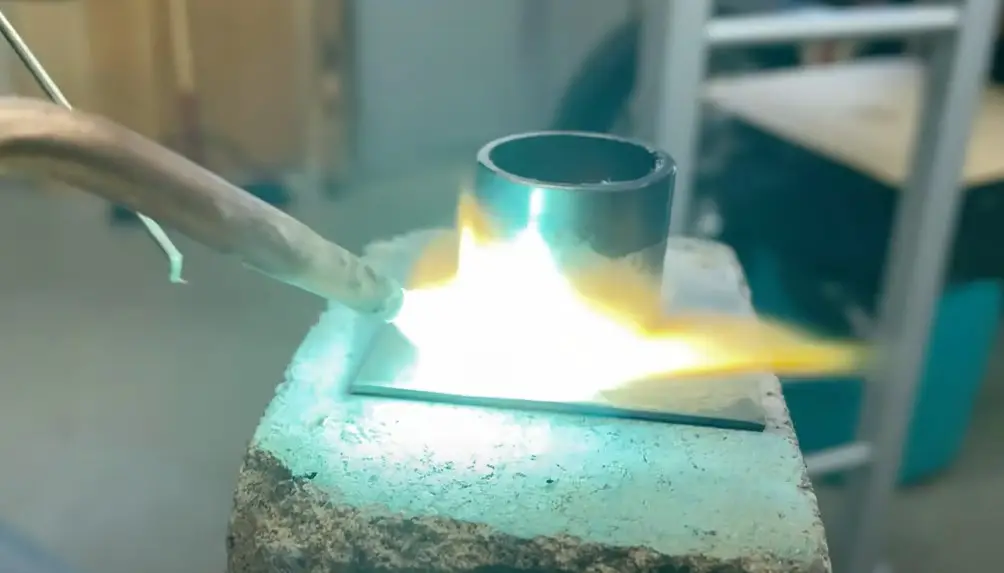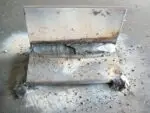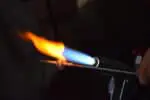Joining two steel pipes is something that is primarily done through welding. But is that the only possibility? What if your welder breaks? Or you have an emergency where you don’t have access to a welder? Can you go for alternatives?
The answer is a huge YES! Joining two pieces of steel or any other metal is possible without welding. There are several methods with which it can be done. But first, you need to understand the pros and cons of each technique to decide which to employ.
Care to venture? Then do read more…
Is welding stainless steel difficult?
Welding stainless steel can be a tough task due to its properties. The alloy is quite transparent in showing the changes in its texture as it tends to easily distort or warp when heat is applied.
Slight marks or scratches can be easily identified on its surface. As welding requires the metal to be hot (excessively hot at times), stainless steel can give you a hard time.
Why should I go for methods other than welding to join two steel pipes?
Apart from inaccessibility to a welder and the alloy’s sensitive nature, there are certain other factors that make welding unfavorable. They are:
1.) Costlier than its alternatives: Supervision and inspection of joints welded are costlier than with other alternatives. As the latter consists of less sophisticated methods, upkeep efforts can be limited.
2.) No guarantee of strength: If you are not comfortable with welding or are not sure about the number of constituents to be used, the result cannot be up to your expectation. For instance, the wrong proportion of filler metal can result in brittle joints.
3.) Uneven distribution of heat: Temperature during welding can be quite unstable and vary and this can result in immense stress on the joints.
4.) Tend to develop fissures: As the welded joints are not able to be moved, contracted, or expanded, racks can appear on them as time passes by.
What are the methods to join steel pipes other than welding?
There are several ways in which you can accomplish this. I am going to list the most used methods of all for you here:
1.) Brazing
Brazing is the next most effective method after welding to join two pieces of steel. Like welding, brazing also involves heat, torch, flux, and filler metal. The difference is the intensity of heat and the less sophistication involved with the process.
With brazing, the filler metal is placed above the base metal (with flux on it) and heat is applied using a torch. Unlike welding, the melting point of heat applied will be lesser than that of the base metal.
The filler metal upon getting heated, melts and through capillary action takes almost the form of an adhesive and brazes the joints.
Three points to be kept in mind while brazing is:
1. Distance of the torch: Keep an adequate distance between the torch and the base metal. This ensures that the heat applied will not me too much for the base metal.
2. Size of the cone: Cone is the mouth of the torch. Through practice decide the size of the cone and regulate the flame for the kind of joint you are rooting for.
3. The angle of the cone: Just like in welding, the angle of the cone matters. If you are not aware of the right angle, the effect of the heat will be affected.
Pros and cons of Brazing are:
| Pros | Cons |
| Creates strong joints
Versatile technique that can be used for various applications. Can be performed at lower temperature than welding and give almost similar results. |
Joints not as strong as welding
Not suitable for larger assemblies Not suitable for spot joints Requires oxyacetylene torch particularly for steel. |
For a quick understanding of the technique, do check this video:
2.) Soldering
In terms of effectiveness, soldering comes after brazing. The components in soldering include a soldering iron, a very thin filler metal, flux, and base metal. Similar to brazing, flux is applied to the base metal.
Flux is necessary to keep the surface clean from contaminants, oxidants, or other particles. With the help of electricity, soldering iron gets heated. When the tip of the iron touches the filler metal, it melts within seconds, creating the needed content to join the pieces.
The temperature for soldering is below the one required for brazing. Often it does not go beyond 800 to 840 Fahrenheit. Filler metal will usually be an alloy, a mixture of gold, aluminum, copper, nickel, or cobalt.
Do check this link to get a strong grasp on soldering:
Pros and cons of Soldering are:
| Pros | Cons |
| Much safer and less complicated than welding
Works on mere electric connection Heat intensity is less Can be easily done Results can be reversed if needed Does not need much expertise and can be learned within few hours |
Joints are not strong as welding
Does not create a mechanical bond between the pieces |
3.) Riveting
Another alternative to welding steel pipes together is riveting them. Unlike the techniques we have discussed so far, this method does not involve gas or intense heat.
The process is pretty simple, where a rivet is placed inside a pre-drilled hole common to two pieces of metal, and its tail is flattened by pounding on it.
The rivet thus compressed tightens its hold joining the two pieces of metal or alloy in this case. Compared to welding, this technique involves much fewer constituents.
Pros and cons of riveting are:
| Pros | Cons |
| Heat is not necessary (at times rivets are heated)
Useful for shear loads Less sophisticated than welding Takes less time to be completed No issue of fumes or other gas-related problems Relatively safer than welding Suitable for various positions Inspection of riveted joints is less expensive than welding |
Better suitable for steel sheets than pipes
Joints are not gap-free Joints are easily prone to corrosion Modifying the joined elements is difficult compared to welding Less integrity of joints |
See also: Is Welding Better Than Riveting?
Check this link to see how riveting is done:
4.) Adhesive
Adhesive is nothing but the glue that is used to join metals. Evaporation of the solvent involved makes the glue do its job. When applied with adequate heat and pressure these can create satisfactory strong joints.
Over the years, many experiments have been done on them that these solvents are used widely today in industries such as automobiles, aerospace, structural and more.
There are different types of adhesives such as epoxy, silicone-based, and polyurethane. Double-sided tapes are also used in some cases.
By the entry of plastic-based adhesives, these are increasingly used as an alternative to join metals especially steel.
Epoxy in particular is highly recommended due to its special composition involving nanoparticles that are powerful enough to create pretty strong joints, unlike the traditional adhesives.
Pros and cons of Adhesives:
| Pros | Cons |
| Easiest method
Cheap alternative No risk involved Reduced stress concentration on joints Free of issues such as corrosion. discolouration or distortion Not much post-clean up needed |
Weaker joints
Not suitable for heavy pieces of steel Joints can lose integrity in high temperatures Difficult to disassemble the joints Surface preparation is necessary |
See this video to see how adhesive can be used to join two steel rods:
5.) Nuts and bolts
Using nuts and bolts is very similar to riveting. Like the latter, there will be two pieces to join with pre-drilled holes, but instead of a rivet, nuts and bolts are used in this case.
If the base is threaded, then only bolts are used. Nuts and bolts can be inserted and placed tightly using a drill thereby firmly joining the two steel pipes.
Pros and cons of using nuts and bolts are:
| Pros | Cons |
| No heat required
Only two elements needed ( Nuts/bolts and a wrench) Less riskier than welding |
Not leak proof
Not as strong as welding Better suitable for sheets than pipes |
Can spot welding two steel pipes be an alternative to welding them?
Spot welding cannot be considered as an alternate method to welding as it is a type of welding itself. It is called ‘resistance welding’. It is one of the earliest welding methods out there. This technique is suitable for thin metals like stainless steel.
Mostly used in automobile industries, spot welding is preferred for sheets more than pipes. While normal welding uses arc to create sparks to melt the base metal, here electric resistance is used to achieve the same goal. Hence, spot welding cannot be added to the list that I mentioned above.
To conclude
Even though there are many alternative methods to welding that have been there for years and many are being developed using the latest technology, the preference is given to welding never subsides.
But in certain conditions like the ones that I have mentioned initially in the blog, other methods are used to join steel pipes or any other metal for that matter.
Hope you had fun reading this blog post!
Do come back for more!








